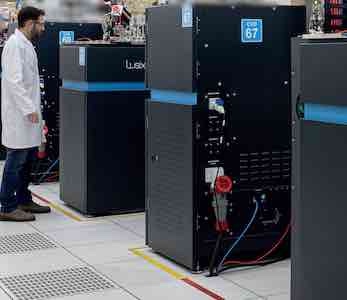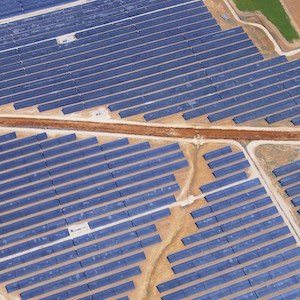O investimento que o grupo LVMH fez na Lusix, empresa israelense de diamantes cultivados em laboratório foi de grande porte.
Tudo leva a crer que a Tiffany, marca recentemente comprada pelo grupo também oferecerá esses diamantes também, além dos naturais, claro. Mas quem é o público-alvo? Os jovens engajados em questões ambientais? Há quem diga que a grande jogada seria vender os diamantes naturais por valores mais altos.
A DeBeers foi quem abriu esta porta, ao anunciar que está comercializando diamantes de laboratório, sem medo de ser feliz.
Fato é que o mercado tem aumentado esse tipo de oferta para seus consumidores. Eu arrisco dizer que todos saem ganhando. Todos poderão ter o diamante do tamanho que quiser, e mesmo, guardar “o verdadeiro” e usar o “falso” por razões de segurança.
Por: Monica Lerina
>>>>>>>>>>>>>>>>>>>>>>>>>>>>>>>>>>> Abaixo leia a matéria na integra: <<<<<<<<<<<<<<<<<<<<<<<<<<<<<<<<<<
What’s Behind LVMH’s Investment in a Lab-Grown Company?
LVMH Luxury Ventures’ investment in Lusix was eyebrow-raising and noteworthy. What does it mean going forward?
When asked why LVMH invested in his nascent diamond-growing company, Lusix’s owner, Israeli billionaire Benny Landa, said at a JCK Las Vegas press conference: “Clearly, [LVMH] have made a financial investment. But I would ask myself, ‘Why would a luxury brand make a financial investment?’ There’s obviously very good reasons.”
After discussing that question with some well-informed folks, here are the best possible guesses.
One complaint I often hear from lab-created diamond sellers is that growers can’t produce consistently or reliably. That issue has led to at least one lawsuit.
“It’s hard to find nice-quality goods,” Ada Diamonds cofounder Lindsay Reinsmith told me last year. “If I had to guess, that’s the No. 1 reason that an LVMH brand has not stepped in [to the lab-grown market]. There are not enough nice goods available.”
If LVMH ever wanted to offer a lab-grown product—especially if it wanted to sell it at a big name, like Tiffany—it would need scale. Lusix says its production is more consistent and high-quality than others. Of course, it’s not the first grower to make that claim; only time will tell if that actually pans out. But LVMH’s investment will help Lusix scale its possibly more consistent production.
Which raises the question: Would LVMH—known for ultraexclusive luxury–ever offer lab-grown diamonds at one of its jewelry brands? One has to believe it may consider it, as it’s already used lab-grown diamonds on a TAG Heuer watch.
Consider LVMH’s plan for Tiffany: It’s targeting a younger demo; it wants to “elevate” the brand to reach higher price points; and it continually seeks—and even seems to crave—attention. Launching a lab-grown diamond line might tick two of those boxes, though it’s still not clear how lab-growns are playing in China, another brand focus. But if lab-grown diamonds are used as “starter” price-point jewelry, it could tick all three. (For the record, Tiffany’s past management said that lab-grown diamonds are “not a luxury material.”)
Which brings up another question: Would an LVMH brand ever carry lab-grown engagement rings?
That might be harder to imagine, given how natural diamond solitaires are the backbone of LVMH brands such as Tiffany. But it’s a little easier to conceive following Russia’s invasion of Ukraine, which is looking like a long, multiyear slog. Even if the war ends tomorrow, Alrosa might not get off the U.S. sanctioned entity list for some time. That leaves a possibly huge gap in diamond supply.
On LVMH’s most recent earnings call, chief financial officer Jean Jacques Guiony said, “We are currently working on replacing sourcing from Russia, from other locations, and it’s perfectly doable in a reasonably short time frame.”
Might Lusix be part of its short- or long-term solution? We’ll see.
Also worth noting: Lusix is marketing its diamonds as “sun-grown,” as they are produced with solar power. At the press conference, Landa said he wants “Sun Grown Diamonds” to become a “brand within a brand,” like Intel Inside.
That’s telling; when gem companies talk about “ingredient brands,” they almost always reference Intel—see Forevermark, Gemfields, WD Lab Grown, and, um, Alrosa.
Of course, building any kind of brand is expensive, provided a company is serious about it, which I’m not sure Lusix is. Landa declined to spell out any ad plans, but Intel’s annual marketing budget is over $1 billion.
It’s also not clear whether the term sun-grown complies with the Federal Trade Commission (FTC) Guides for describing lab-grown gems, especially if that term is used alone, and not with another recommended descriptor. (Those are currently limited to lab-grown, lab-created, and [company]-created.)
In 2019, the FTC warned lab-grown companies against using terms that “could suggest that the diamonds are naturally grown,” specifically calling out the term pure grown.
If FTC attorneys are on record objecting to the term pure grown, it’s hard to imagine sun-grown, a frequent descriptor for fruits and vegetables, would fare any better.
Sara Yood, deputy general counsel of the Jewelers Vigilance Committee notes “the [FTC] Green Guides caution against terms that could suggest laboratory-grown diamonds are naturally grown.… Sun-grown diamonds could be implying to a consumer that the diamonds were naturally grown. This claim, without qualification, could absolutely deceive a consumer, and I would expect the FTC would agree.”
She adds that phrases “like ‘solar-power lab-grown diamonds’ or possibly even just ‘solar lab-grown diamonds’ would be OK under the current guides.” But she believes that sun-grown diamonds would not be.
Lusix spokesperson Elizabeth Chatelain responds: “We think it’s an accurate descriptor. Maybe five years ago, it would have been confusing for consumers, but now we feel that they understand the difference. In the consumer’s mind, there are two terms: natural/mined and grown/created diamonds.”
[UPDATE: Lusix says it’s reached out to the FTC to make sure its wording is okay. If not, it will follow its recommended modification.]
Regardless, this does explain some comments Landa made to me during a post–press conference interview, which first struck me as strange, but now make more sense. In them, he compared growing diamonds to growing tomatoes.
Lusix’s diamond growers work like “a tomato grower in a greenhouse,” he said. “We don’t replace nature. All we do is create the environment that nature can create a diamond. We do it in a chamber, but it’s nature that creates the assembly that creates the diamond, just like it’s nature that grows the tomatoes. All the farmer does is create the right conditions—the soil, etc.—that enables nature to create the product.”
With all due respect to Mr. Landa—who has that salesman’s skill of seeming completely committed to what he’s saying—there’s obvious differences between a highly mechanized factory and a greenhouse or a farm. Greenhouses are hundreds of years old. They were around before electricity. Diamond-growing machines require huge amounts of power and were invented in the mid-20th century.
Landa did admit that diamond growing is “not a natural process,” but claimed tomato growing isn’t natural either.
Now it’s true, there are greenhouses and farms that use so many industrial processes, including chemical pesticides and GMOs, that they can’t qualify as organic. I’m not sure why Landa would want to lump his process in with those operations. Regardless, some greenhouse-grown tomatoes can be certified organic. By contrast, no lab-growing facility would be certified as natural, no matter how many clever analogies one comes up with.
When talking on the Rapaport podcast about the supposed eco benefits of lab-grown diamonds, Landa said that “all you have to do is look at a picture” of a mine.
If that’s all you have to do, let’s have some visual aids.
Here’s a photo of a tomato being grown in a greenhouse:

And here’s a picture of Lusix’s diamond growing factory.

There are many positive things one can say about solar-powered lab-grown diamond machines. Comparing them to tomato plants is, at best, a stretch.
Why am I harping on this? Landa is an accomplished businessman who clearly chooses his words with care and rarely wanders off message. These comments were likely said purposefully.
It’s an odd mix, the way Landa boasts his factory is the “most advanced, most fully automated” one around, but also eco-markets his diamonds as “sun-grown”—just like tomatoes. (They’re equally non-natural!)
Lusix has the potential to uplift the lab-grown industry. There are plenty of fine lab-grown companies. But that sector has also been a magnet for BS artists, criminals, and the Chinese military. It’s also seen its share of misleading rhetoric and wanton disregard for FTC regs.
Lusix has the chance to do better, to improve the entire category. That’s likely what attracted LVMH. Going forward, I hope it sets its sights on realizing that potential.
Top: Lusix’s solar-power generators (photo courtesy of Lusix)Follow JCK on Instagram:@jckmagazine
Follow JCK on Twitter:@jckmagazine
Follow JCK on Facebook:@jckmagazine
By: Rob Bates
Font: https://www.jckonline.com/editorial-article/lvmhs-investment-lab-grown/


